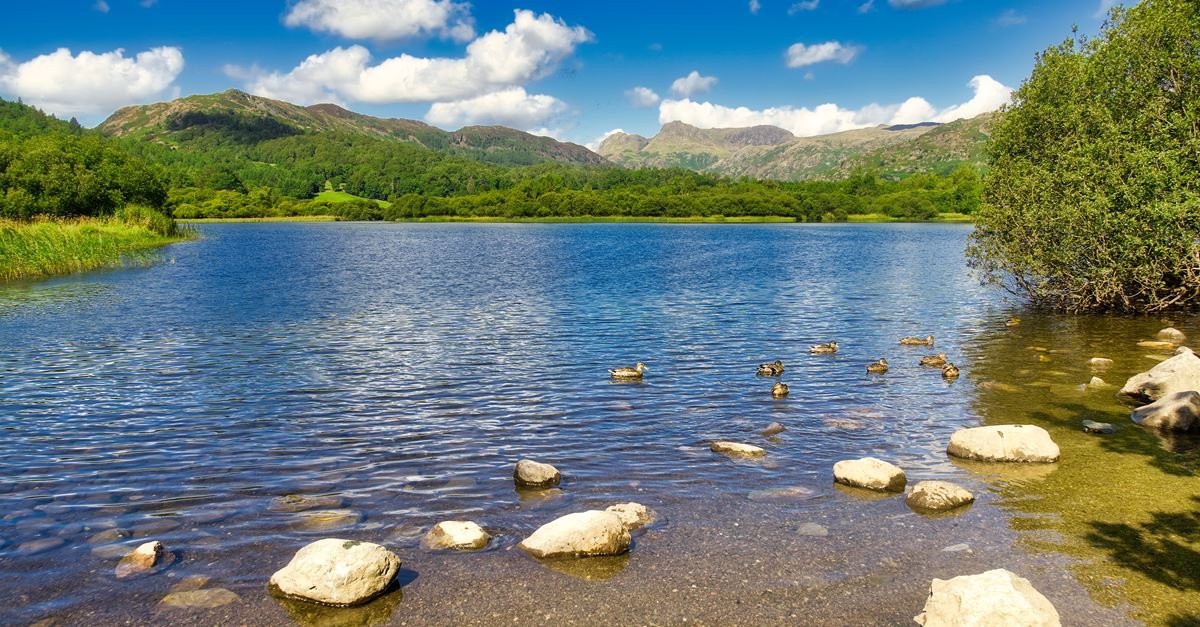How do we Save Windermere? Case studies for complete removal
Matt Staniek
Over the past two years, our campaign to stop sewage pollution in Windermere has been driven by a simple yet powerful message: we must protect our lake, our community, and our wildlife for now and for generations to come. Our one ask is very simple: stop the sewage.
Our ambition has not changed in the two years of the campaign; if anything, we stand more resolute and stronger than ever before. We must remove all sewage discharges into Windermere if we are to reverse the slow death of the lake. Support for the campaign has grown exponentially over the last two years. We have gained national prominence for Windermere's plight, we have gathered and continue to gather more data, we are launching exciting new projects to safeguard the lake - and we are only just getting started.
The only comprehensive approach to protect Windermere is complete removal of sewage discharges, to secure the lake’s ecological health and resilience in the face of climate change. Save Windermere is focused on the long-term protection of our lake, not just mitigation for the current problems, many of which we have known about for decades.
Waterhead, Windermere, 13 August 2022
Why do we need this solution?
Windermere is not adaptable to climate change and excessive nutrient enrichment. Without ambitious action, the lake's water quality will continue to deteriorate, leading to harmful algal blooms and the suffocation of aquatic life. Algal blooms reduce the dissolved oxygen within the water column, particularly when the bloom subsides, sinks to the lake bed, and decomposes. If a bloom is large enough, it can kill life within the water. This is an irrefutable, inescapable, and seemingly inevitable fact. Despite a reduction in nutrient inputs, our lake appears to be in terminal decline, with algal bloom biomass increasing in the north basin and minimal dissolved oxygen levels decreasing. The current measures are not sufficient to address the magnitude of the problem, especially considering the growing number of visitors to the Lake District. We must recognise the urgency of the situation and strive for a long-term solution that allows Windermere to naturally recover and sustain itself.
Windermere is unique in comparison to our rivers and coasts. It is an incredibly slow and almost enclosed system. Much of the historical and ongoing input into the lake will still be in the lake, trapped in the sediment. This sediment is so nutrient rich that it is, in essence, a ticking time bomb waiting to be brought to the surface.
So, let’s dive into the case studies. These demonstrate why complete removal of discharges is the only viable option to protect Windermere, and how this has been achieved elsewhere in the world, starting close to home with Elterwater.
Elterwater, Lake District National Park, UK
Elterwater
Elterwater is a three-basin lake nestled deep within the Windermere catchment. It serves as a sobering reminder of the consequences that mismanagement of our lakes can have. In the 1990s, it became eutrophic, leading to fish deaths. The main cause? The final treated effluent from Langdale Wastewater Treatment Works. The remediation work saw the pipe moved so it is now discharging directly below Elterwater. This work has severed the input of nutrients and has provided Elterwater with the tools to recover. Even though this work was completed decades ago, the lake is still recovering and will continue to do so until all previous pollution has cycled through its ecosystem. This is a powerful testament to the necessary measures required to rejuvenate threatened lake ecosystems. We need proactive management, not just reactionary measures when the situation becomes dire.
Lake Annecy, France ©SwimQuest Holidays
Lake Annecy
Lake Annecy presents a compelling case due to its similarities to Windermere. Both lakes were glacially formed, have two basins, span over 10 km in length, have large resident populations, and support economically significant tourism industries. The most striking difference? Lake Annecy is classified as the cleanest lake in Europe due to the complete removal of all sewage discharges, while Windermere has accumulated over 60 years of pollution, now trapped deep below its surface.
A long-term solution to the eutrophication of Lake Annecy was initiated beginning in 1957 when algal blooms increased and fish populations sharply declined. Local citizens, scientists and local officials took action by creating SILA (Syndicate of Lake Annecy Communes), under the leadership of then Mayor Charles Bosson. Beginning in 1962 and completed in 1976, a network of sewage collecting pipes was installed around the lake. Domestic and industrial wastewater was progressively channeled through these pipes to a newly built sewage treatment plant in Annecy, outside the lake's catchment. This allowed the lake to recover and secured the long-term protection of Annecy.
The real lesson of Lake Annecy is not so much the specific technical solution to its specific problems, but the example it gives of local citizens and their community coming together to find original solutions to an apparently intractable problem, and the patience and determination they demonstrated over many years to achieve a successful outcome.
Meanwhile, our lake faces an uncertain future. Whilst the two lakes can’t be compared apples-to-apples and not all work completed at Annecy is applicable or favourable, this demonstrates two approaches resulting in two very different outcomes.
Lake Washington, Seattle, USA
Lake Washington
Lake Washington in the United States experienced severe eutrophication in the mid-20th century due to high levels of sewage discharges. The pollution caused excessive nutrient loading, leading to harmful algal blooms and de-graded water quality. Exactly the same solution was undertaken at Lake Washington as at Lake Annecy. The towns around lake Washington grouped together to form a new organization called Metro which took responsibility for saving the lake. Metro constructed a sewer mains along the lake shore just as was done at Lake Annecy, with the same successful results in returning the lake to health.
This comprehensive measure completely removed sewage discharges from the lake and proved highly effective in improving the water quality of Lake Washington. Nutrient levels decreased, algal blooms subsided, and the ecosystem began to recover. The success of these efforts underscores the importance of comprehensive management strategies and the necessity of complete removal as a sustainable solution for protecting the lake's health and ecological integrity.
The Solution
Windermere's future hangs in the balance, and the time for decisive action is now. A 2013 report by United Utilities, modelled the complete removal of the largest wastewater treatment works in the catchment. This work proposed a new pipe network underneath the east shores of the lake, diverting the treated effluent below the lake itself. The cost? Only £25 million. I use the term "only" in comparison to United Utilities' staggering £300 million return to shareholders in the 2022-2023 financial year. Currently, cost savings are taking precedence over the protection of England's largest and most iconic body of water. Government must act now to rectify decades worth of underinvestment that is now evidenced by the layer of sediment that sits at the bed of Windermere.
We must learn from successful case studies of similar lakes worldwide and replicate the solution that has proven effective: complete removal of all sewage discharges. By implementing comprehensive management strategies, including improved wastewater treatment and the redirection of sewage outflows away from the lake, we can protect Windermere's ecological integrity and secure its future for generations to come. Let's fight for a commitment to safeguard Windermere forever, by holding accountable those who have the resources to save it.





